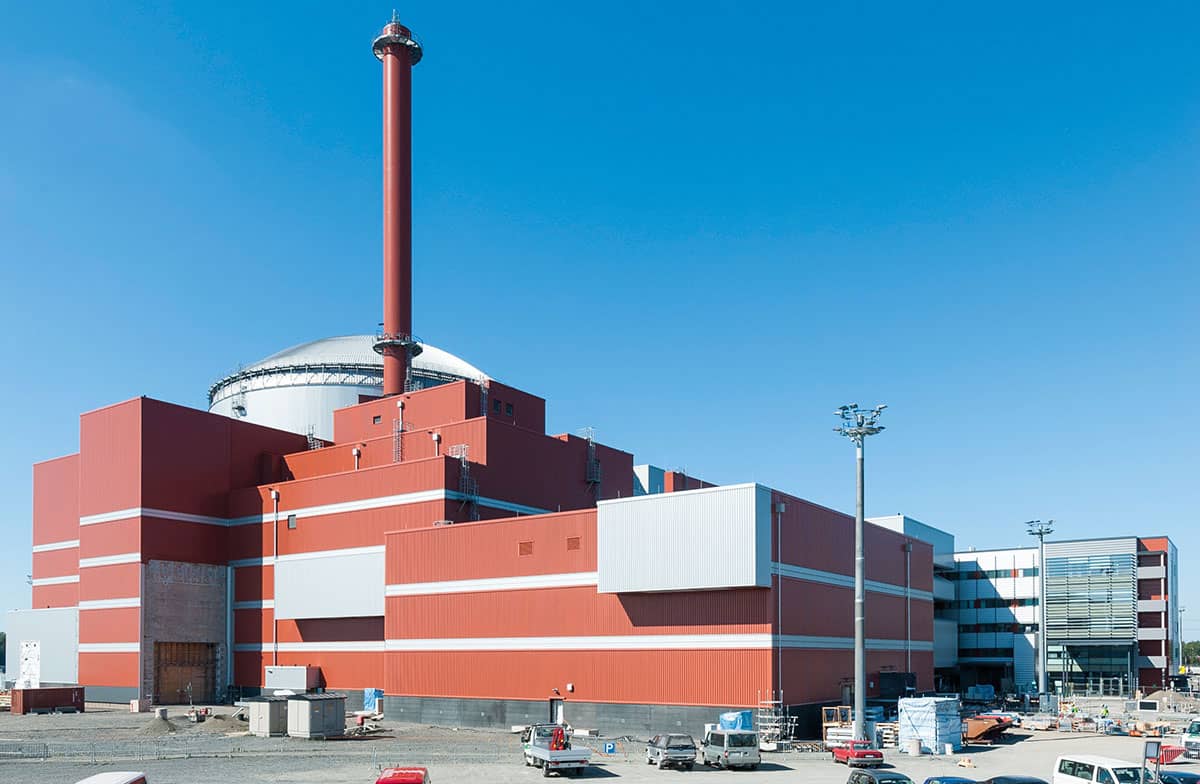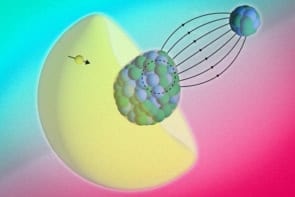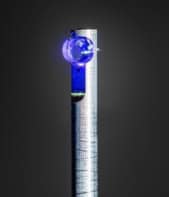The first European pressurized water reactors are expected to be switched on next year, but they have been hit by redesigns, cost hikes and delays, as Michael Banks reports

The headlines have not been kind to Hinkley Point C – a proposed nuclear reactor for south-west England. In the planning stages for almost a decade, the reactor has been hit by numerous delays as well as fights over funding and the price of the electricity it would generate. It was thought a breakthrough would come in early February when the French electricity giant EDF – the majority shareholder in the facility – would finally agree to start construction, but that had still to be announced as Physics World went to press.
The site at Hinkley is currently home to Hinkley Point A, a Magnox station that has been in the process of being decommissioned since 2000 after a 35-year life, as well as Hinkley Point B, which is an advanced gas-cooled reactor (AGR) station that opened in 1976 and still generates around 1250 MWe of electricity. Hinkley Point C is scheduled to begin operating in 2025 and will generate 1600 MWe – about 3.5% of the UK’s electricity needs. It will also be one of the first new nuclear power stations to be built in the UK for more than 20 years.
Hinkley Point C represents the future of nuclear energy generation in the UK – a new type of design that promises higher output and greater efficiency with less waste. It is a European pressurized water reactor (EPR) – a “third generation” reactor that is based on the pressurized water reactor (PWR), a type of light-water reactor. There are around 300 PWRs currently operating around the world, with 75 alone in France. PWRs use water as the primary coolant, which is pumped under high pressure to the reactor core where it is heated by the energy from nuclear fission. The heated water then flows to a steam generator where it transfers its energy to a secondary system where steam is generated and flows to turbines that, in turn, spins an electric generator. The EPR is basically a “beefed up” PWR, according to Paul Norman, who runs a Master’s course in the physics and technology of nuclear reactors at the University of Birmingham in the UK. “They are the next evolution, the next step up in PWR design,” he adds.
Hinkley Point C is not the first of its type. Four other EPR units are being built around the world (see “Delays and costs overruns – the EPR story” on page 8). Two reactors in China are scheduled to come online in 2017, while ones in both Finland and France have been hit by costly delays and are expected to be online in 2018.
The common feature of PWRs is that they are simple to operate: they require less intervention, less fuel and are easier to maintain than previous designs. They also have advanced, and/or “passive” safety features that rely on physical forces such as gravity and convection, with little or no need for mechanical devices such as pumps. “Water reactors are cheaper and simpler, more economical, and don’t have complex parts,” says Norman. “The EPR has the highest power and highest thermal efficiency of any PWR, and a host of back-up safety systems.”
Following the Fukushima nuclear accident in Japan in 2011, regulators in the four countries that were building EPR reactors demanded small tweaks to the design to take into account a possible Fukushima-style event happening with an EPR. They are now thought to be very safe and include several mechanisms to prevent accidents from occurring. They have four independent emergency cooling systems, each providing the required level of cooling for the decay heat that continues for one to three years after the reactor’s initial shutdown.
EPRs also have a leak-tight containment around the reactor as well as an extra container and cooling area if a molten core does manage to escape the reactor. The two-layer concrete wall with a total thickness of 2.6 m is designed to withstand impact by aeroplanes and internal overpressure. “There are many positives for the EPR design,” says Norman. “But there are also negatives where the designs following Fukushima could have been overtweaked with safety systems going too far, increasing the complexity and build times.”
Learning from the past
There are currently 14 AGRs operating in the UK and one PWR, which is located in Sizewell, Suffolk, and is the UK’s newest reactor, having opened in 1995. While the UK’s expertise is with gas-cooled reactors, Peter Haslam, head of policy at the Nuclear Industry Association (the trade association for the civil nuclear industry in the UK), does not see there being an issue with switching to water reactors. “There are clearly opportunities for the UK supply chain to be involved with a different reactor design, so that has a positive effect,” he says.
Hinkley Point C received planning consent in early 2013, yet it has taken years to get the project off the ground with wrangling over finance as well as the price for the electricity it would generate. Last year, the UK government provided a £2bn ($2.8bn) sweetener to support the reactor and later in the year EDF and China Guangdong Nuclear Power Group (CGN) signed an investment agreement for £18bn to build it. Under the agreement, CGN will take a 33.5% stake in Hinkley Point C with EDF owning the rest. Meanwhile, the two firms would also build another EPR at Sizewell in Suffolk, as well as a reactor in Bradwell, Essex. The latter will be built using Chinese reactor technology with CGN being the majority stakeholder.
Pricing has been a major obstacle for the project, in particular the “strike price” – the minimum price for electricity that is paid for what the reactor produces over a 10-year span. If the price for electricity generated at Hinkley Point C is below the agreed strike price – £92.50 per megawatt hour – then the government will top up the rest with the money coming from the consumers of electricity rather than being state subsidized. Yet the agreement works both ways and if the price of electricity increases beyond the strike price, then EDF will pay back the difference.
In February, EDF was expected to finally announce that it was going ahead with building the reactor, but progress has since stalled as it seeks to get approval from the firm’s board. “The economics of new nuclear builds are heavily weighted towards construction,” adds Norman. “You need to get that capital upfront as most of the cost of a reactor is in building it and that is where the Chinese investment has been so important to get it off the ground.”
Yet if construction does start soon, the reactor is expected to be roughly built on time and to budget, mostly because the firm has learned lessons from previous reactors riddled by delays, especially Olkiluoto 3 in Finland. “Olkiluoto 3 was the first of a kind so it is breaking fresh ground,” says Norman. “The general thought is that when you have a handful of new reactors, the next one you build will be a smoother process.” Some of those benefits have already been seen in the latest two EPR reactors that China is building, which are so far roughly on budget and have not been hit by major delays.
Norman’s view is shared by Haslam. “Olkiluoto 3 hasn’t been a huge success story, but the lessons from the previous reactors have been applied to Hinkley Point C to ensure it will be closer in terms of time and budget,” he says. “The key point is that we have learned the lessons of previous reactor builds and the UK EPR has passed the regulatory process – it is a stable reactor.”
Delays and costs overruns – the EPR story

As well as Hinkley Point C in the UK, four other European pressurized water reactor (EPRs) are currently being built around the world – two in Europe and two in China. Yet they have been plagued by delays and cost hikes.
Olkiluoto 3
The first-of-a-kind EPR at the Olkiluoto Nuclear Power Plant on the Olkiluoto Island in south-west Finland has been under construction since 2005 and was initially scheduled to come online in 2009 at a cost of around €4bn ($4.4bn). With an output of 1600 MWe, the reactor is being built by Areva and Siemens for the Finnish electricity operator TVO. Yet it has seen several revisions to its start-up date and has been hit by quality-control issues as well as the supply of components. It is now expected to be online by 2018 with the project estimated to cost at least €8bn.
Flamanville 3
Construction of the EPR at the Flamanville Nuclear Power Plant on the north-west coast of France began late in 2007. With an output of 1630 MWe, the plant was expected to be operational within four years. Yet by 2011, EDF, which is the operator of the plant, announced that the costs had increased 50% to €6bn and that the project would be delayed until 2016. When the Fukushima nuclear accident hit in March 2011, it led to French regulators demanding changes to the design. Last year, Areva, which is building the reactor, announced that “anomalies” had been detected in the reactor’s vessel and by late last year EDF announced that costs has escalated to €10.5bn with the reactor set to open in 2018.
Taishan 1 and 2
Taishan 1 and 2 are the first two reactors based on Areva’s EPR design to be built in China, with the firm managing to win the bid to build them in 2007 at a cost of €8bn. Taishan 1 has been under construction since 2009 and is expected to start up in early 2017, while work on Taishan 2 began in 2010 and it is scheduled to begin operating later in 2017. The reactors – both generating around 1750 MWe – are located on China’s south coast around 140 km west of Hong Kong and will be owned by the Guangdong Taishan Nuclear Power, a joint venture between EDF and China Guangdong Nuclear Power Group.



